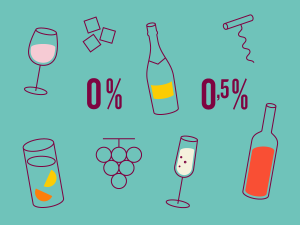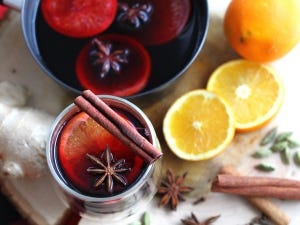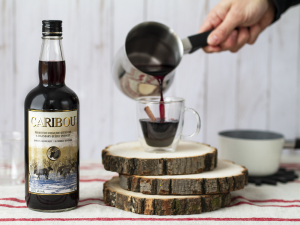When Akim and Abdel Acacia launched their restaurant in Montréal, it was as a pop-up that was supposed to last 30 days, “just to see what would come of it.” Five years later, the success of Piklìz has never wavered. The restaurant has become an essential stop for anyone keen to discover reinvented Haitian and Caribbean cuisine, coloured with multicultural influences and the brothers’ desire to share their heritage. Even as children, Akim and Abdel saw their father espousing an open and modern concept of food, which he passed down to his sons. “He made the best Haitian-style beef and broccoli,” remembered Akim. This mix of cultures, which is at the heart of their cooking today, can notably be found in their griot poutine, a Haitian version of the Québécois classic. According to Akim, Piklìz is much more than a place you go for a great meal—it’s a deep dive into Caribbean culture.


On the menu: Cultural ommersion with a heaping helping of sunshine
“When people come here, they don’t just come for the food. They also come to chat with me—I often work front of house—and for the meticulously crafted playlist, the decor, the fact that it’s a cozy yet welcoming space. Each visit is an experience on several levels. It’s a Haitian-style celebration,”
Akim Acacia
A heritage to share
If Piklìz makes Haitian cooking accessible to everyone, it also differs from traditional Haitian restaurants in many respects. The two brothers aimed, among other things, to help people discover a new facet of Haitian food. Akim expanded on this, saying “one of the reasons we wanted to open this restaurant is that we were tired of being represented by snack shops, by that ubiquitous mountain of rice and meat served out of a warming tray. We wanted to show that our cuisine could be a bit more refined and varied.”
He continued by pointing out that the Pearl of the Antilles’ French, Spanish and African heritage lends a great complexity and richness to Caribbean cooking. “There are a lot of lesser-known dishes that we want to expose people to. And I think there’s even more opportunity to show what this cuisine is all about.” Piklìz bills itself as a Caribbean rather than a Haitian restaurant, and Akim explains that “it’s to give us a bit more room to share an idea of what we cook at home and all our influences. And I think that that’s what distinguishes us from others—our variety and what we have to offer.”
Some pairings for Caribbean dishes
We asked Akim to tell us about some signature dishes on their menu, along with pairing options to help you dive into this vibrant cuisine—or to rediscover it with great gusto!
Griot: “Griot is the gold standard in terms of Haitian dishes in Québec. In Haiti, griot is considered street food. It’s a treat that you can eat on the go, not necessarily part of a meal at home. First, it’s cooked for three hours, and then fried until crispy. There’s something really comforting about it, which explains why it’s so popular. When you think Haiti, you think griot, you know?!”
And what should we drink with that? Ti-punch
Kokoye: “Kokoye means coconut in Creole,” explained Akim. “In Haiti, it’s also the name of a soft yet crispy coconut sweet often sold by street merchants. But at Piklìz, we use it to make a shrimp dish. It’s lighter, without any fried element. But it’s also comforting. It’s my go-to when I want something healthier and more refined,” added Akim.
And what should we drink with that? Chardonnay | Fruity and vibrant taste tag
Accras: Everyone knows these tasty little fish fritters, often served as an appetizer or hors d’oeuvre. But at Piklìz, they make a vegan version that wins over the skeptics. “We make them with a traditional Haitian spice, called ‘épis’ or ‘tout trempé:’ parsley, shallots, salt, pepper, lime… and which we use in almost ALL Haitian cooking! It’s funny because people often think they’re made with fish.”
And what should we drink with that? Champagne | Aromatic and mellow taste tag
Carne asada: “Our version of steak frites,” said Akim enthusiastically. But isn’t carne asada more of a Latin American dish? Indeed! “This is a recipe I got from some Guatemalan friends,” he explained. “We top the steak with a chimichurri containing Haitian spices and a pikliz made with shallots, rather than the traditional pikliz—all served with fries.”
And what should we drink with that? Cabernet franc from the Loire
Veggie bowl: While not a Caribbean dish as such, the Piklìz version offers a mix of eclectic ingredients and flavours from Haiti and elsewhere: “frijoles [beans], sticky rice, kale salad, tomatoes, guacamole, plantain chips, pikliz…” But now that you mention it, what is pikliz? It’s THE condiment found on all Haitian tables—a (very) spicy blend of grated cabbage, hot peppers and carrots.
And what should we drink with that? A fresh red wine, like a Gamay from Beaujolais | Fruity and medium-bodied taste tag
Beyond food and drink pairings, what does Piklìz offer guests besides delectable dishes? “A fun vibe,” said Akim with a laugh. “Here, we put aside all that’s corporate and serious. Smiles are everywhere, there’s no pretention, and we like it when people feel good. We put a lot of emphasis on that. We do things well, without taking ourselves too seriously.” As it says so well in Creole in their front window: “Make yourself at home.” A simple message, but one that neatly sums up what Piklìz represents: a place where food becomes a vector for cultural dialogue.
 Access to SAQ Inspire personalized services and store inventories are unavailable at the moment.
Access to SAQ Inspire personalized services and store inventories are unavailable at the moment. Free in-store delivery with purchases of $75+ in an estimated 3 to 5 business days.
Free in-store delivery with purchases of $75+ in an estimated 3 to 5 business days. 










